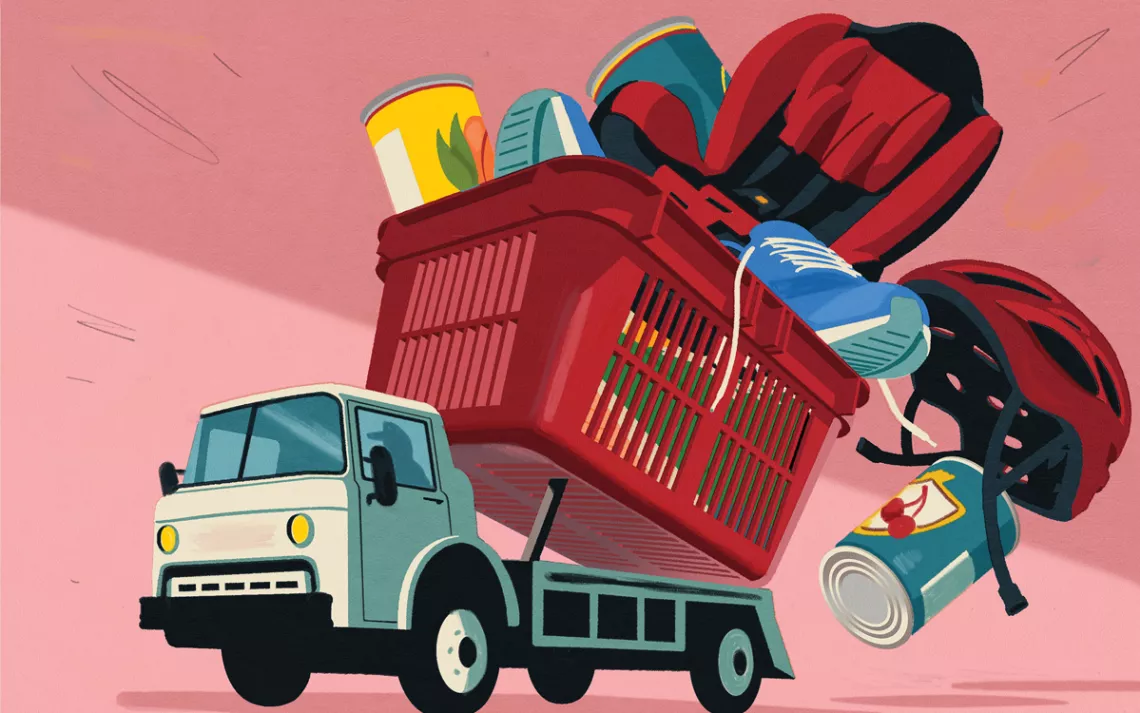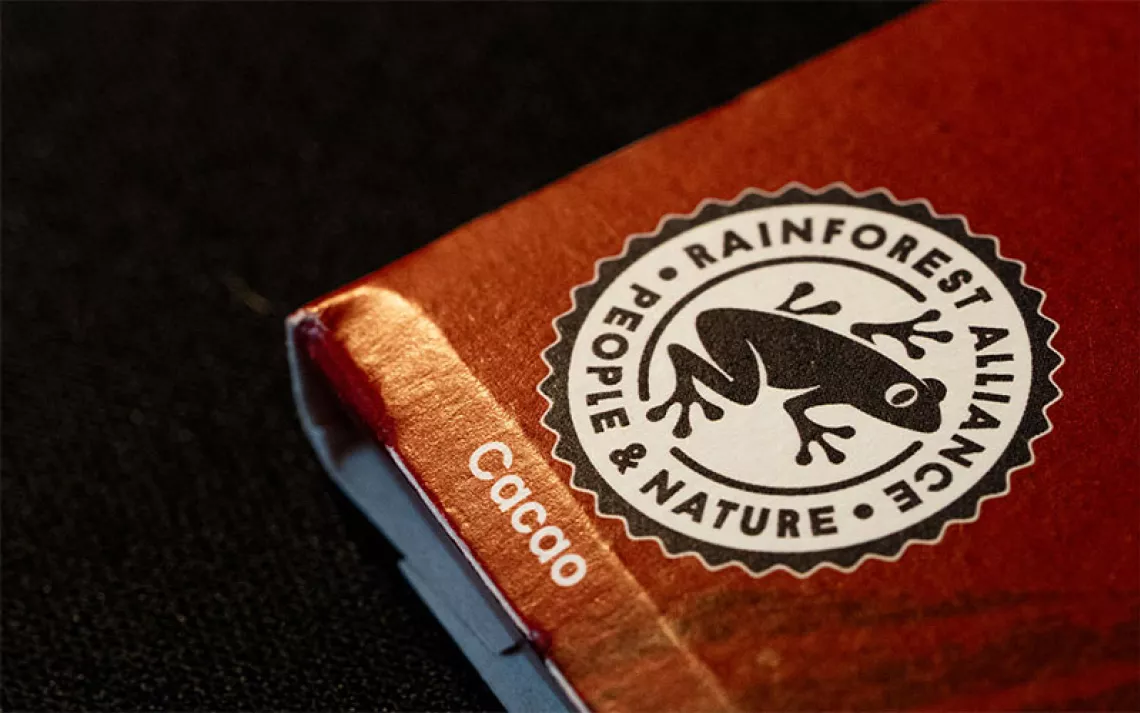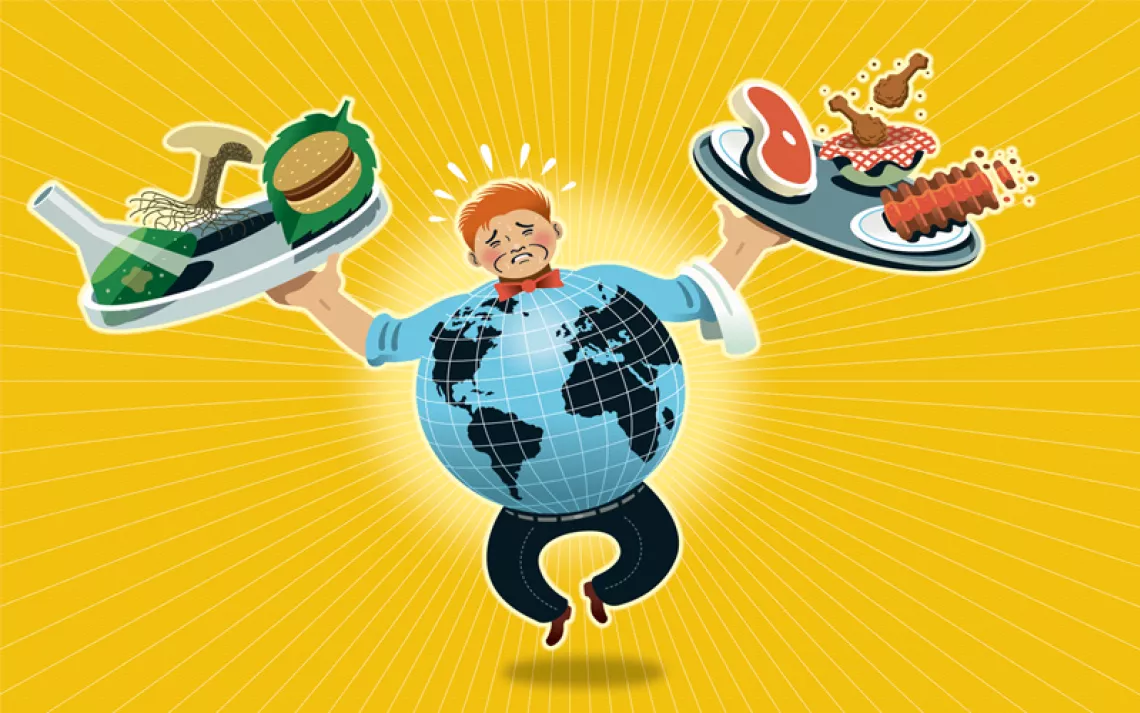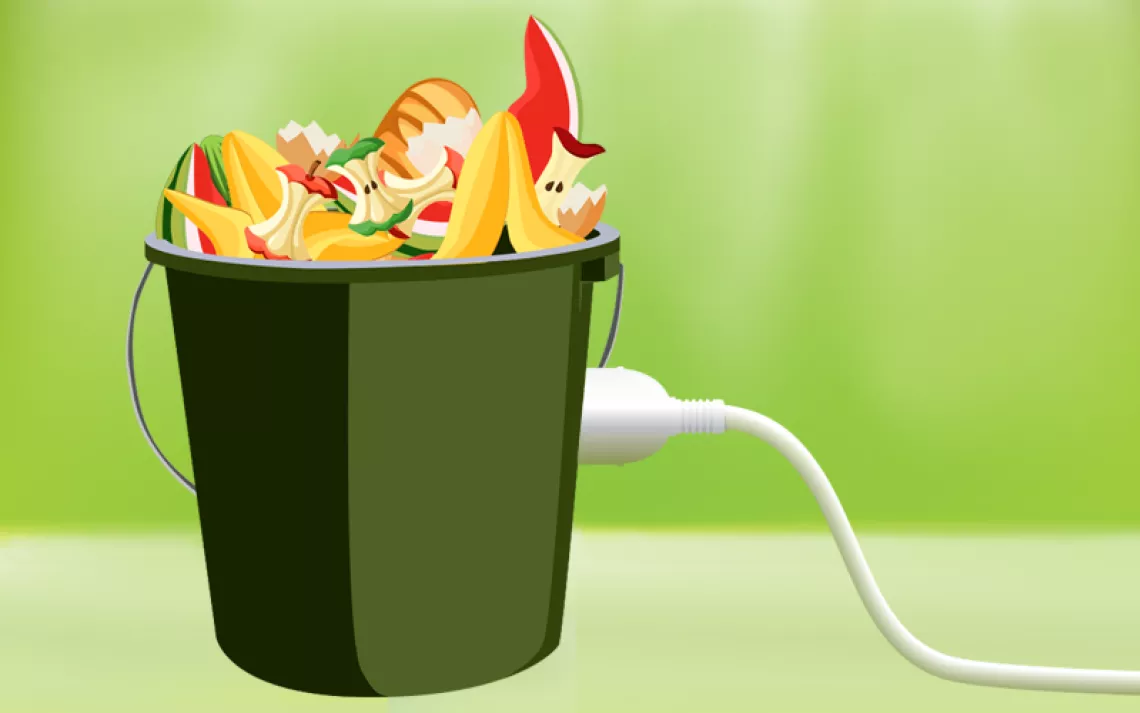Which "Best By" Labels Do I Need to Pay Attention To?
You don't need to be so quick to throw things away. Luckily there's no expiration date on common sense.

Illustration By Pete Ryan
There's an unopened, vacuum-sealed package of tofu in the refrigerator, but the label says it was "best by" last week. "Best by" doesn't mean that the tofu is now spoiled or unsafe to eat, but the certainty of that date still gives one pause. The likely result will be an eight-ounce addition to the 130 billion pounds of food wasted in the United States this year.
Date labels inspire more than just food waste. Expiration guidelines for safety and health-oriented goods, from car seats to athletic shoes, increasingly advise tossing out those products too, even when they appear to be perfectly fine. That creates a dilemma: How can a modern consumer balance sustainability against safety?
Food Labels—Quality, Not Safety
Date labeling of foodstuffs goes back to the safety scares of the early 20th century. Instances of botulism in canned foods led manufacturers to adopt opaque codes that they stamped on their packaging to help retailers determine freshness and product quality. In the 1970s, these labels were made legible to consumers. But they had little impact on food safety, because most issues arise during and after processing and by incorrect storage and handling. "If you find pathogens in your food, you're not going to ship it in the first place," said Job Ubbink, professor of food science and nutrition at the University of Minnesota. "Problems typically happen after a product is opened."
Multiple studies over the years have shown that the manufacturer labels encourage food waste and excess purchases.
The US government has declined to mandate or regulate expiration dates for food (with the exception of infant formula) even as manufacturers have adopted their own confusing categories. A 2020 study found that only 57 percent of US adults could correctly identify what "best if used by" and "use by" mean. (Both refer to the manufacturer's estimate for when a product is at peak flavor or quality; neither are about safety.) Consumers, wishing to be safe, often throw out perfectly good products. "I know the meaning of 'use by,'" Ubbink told me. "But I admit that I sometimes follow the label." That emotive decision has consequences. Multiple studies over the years have shown that the manufacturer labels encourage food waste and excess purchases.
Car Seats, Running Shoes, and Helmets
Oxygen and sunlight degrade the plastic in many modern goods, raising concerns about safety gear. However, the rate of degradation isn't the same everywhere. A child's car seat that's exposed to regular sunlight in tropical Malaysia may not last as long as one parked in London. How, then, do manufacturers determine when a plastic car seat expires? A questionnaire sent to the world's 10 largest manufacturers of child safety seats asking for data, studies, or citations regarding how they determine expiration dates yielded only two partial responses. Asked if it had conducted any studies on aged car seats, Britax, the leading child-safety-equipment company, declined to comment.
One thing is for certain: Expiration dates encourage consumers to trash their car seats. Target, one of the largest retailers in the United States, operates the high-profile Car Seat Trade-In program, which, as recently as 2019, it has marketed as a means to ensure that children are safe. Target brags that the company has recycled 2.19 million car seats since 2016.
Running-shoe manufacturers are similarly reluctant to disclose their criteria and methods for judging their products' safe life span. "A good rule of thumb is to get new running shoes every 300 to 500 miles, or roughly every four to six months if you average 20 miles per week," Adidas advises on its website. When asked for the studies and data that support this claim, the company did not respond. New Balance cited the same 300-to-500-mile range for its men's walking shoes but failed to back it up. Manufacturers of bicycle and motorcycle helmets, some of which claim product life spans of as little as three years, wouldn't disclose their sources either. The Snell Foundation, an independent certifier of helmets that's often cited for the claim that a helmet should be replaced every five years, admitted that its data was "never published" and dates back decades.
The Bottom Line
So what's a sustainably minded, safety-conscious consumer to do? When asked, experts in various product areas agreed on the same simple advice: Trust your senses—not the expiration dates. Regarding foodstuffs, for example, Ubbink recommends that consumers follow storage and handling instructions from the manufacturer but keep in mind that "your nose is pretty good."
Yvonne Shashoua, research professor in synthetic polymeric materials at the National Museum of Denmark, offered similar advice when asked how to judge the safety of bicycle helmets. "If you can see cracks in your cycle helmet, it is time to replace it," she wrote. If a helmet has been in an accident, replace it immediately.
In the meantime, smart consumers should focus on extending the life span of their purchases through proper care, rather than obsessing over expiration claims that may not be applicable to their locations or lifestyles. For example, Anita Perkins, a footwear research engineer for the US Army who designs combat boots, advises always untying shoes before sliding into them. Like other product experts, she recommends relying on human senses to judge when a shoe has expired. "If footwear no longer fits properly or functions as needed for its intended purpose, I will discard it," she shared via email.
Manufacturers want to move product, but sustainable consumption requires more of us. Luckily, there's no expiration date on common sense.
 The Magazine of The Sierra Club
The Magazine of The Sierra Club







